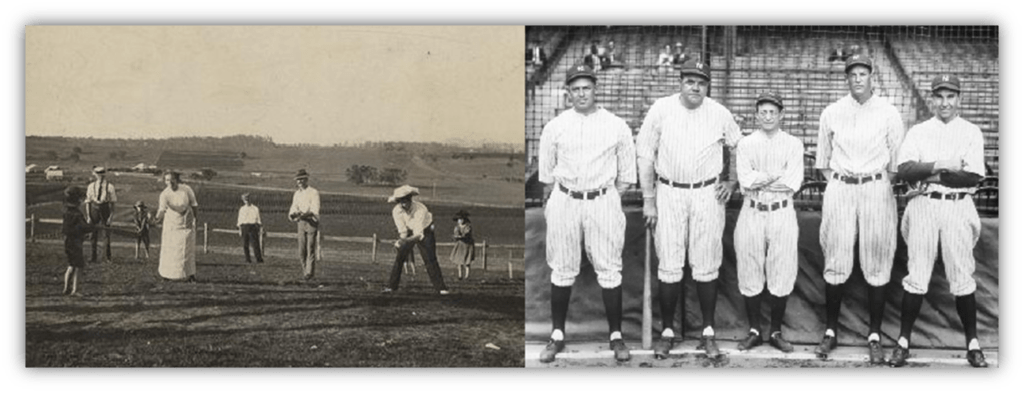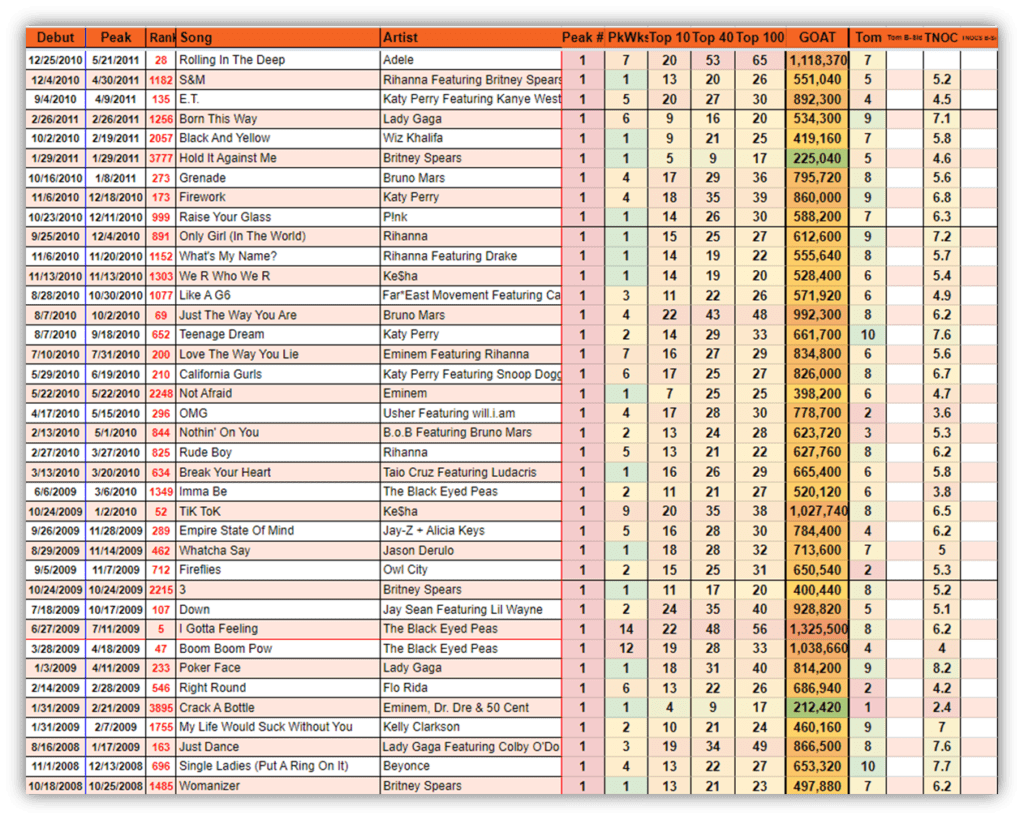For me, it began with a simple e-mail on April 8th, 2019:

For Tom Breihan and Stereogum, it began fifteen months earlier, inspired by a former co-worker who’d begun covering the UK’s Number Ones.

At first, the daily column was minimal, similar to Tom Ewing’s “Freaky Trigger.”
But “The Number Ones” grew into something much, much more.
For about a week, I read the daily entry.
Then my OCD kicked in – I had to start at the beginning, with Rick Nelson’s “Poor Little Fool” (it’s an 8, no matter what Tom says), complete with the 31 comments that had been posted with it.
As I sped rapidly thru the 1950s and 60s entries, I saw the cyclical motion of inspiration:

The intimate nature of the commenting section, inspiring Tom to put more time into the writing and research…
Which in turn inspired The Number Ones Comment Section (TNOCS) to expand their discussions into all corners of the musical world.
By the time Tom switched to writing three times a week, he was writing articles ten times the length of the originals.

The Elegants’ 1958 #1 hit “Little Star” clocked in at 166 words.
Twenty years later Chic’s “Le Freak” was at 1,671.
And the number of comments regularly surpassed 400.

If “Freaky Trigger” was Rounders (a bat and ball game played by children in the 1700s,) “The Number Ones” column was the 1927 Bronx Bombers.
While TNOCS regularly goes off on loosely-related tangents to the now-weekly column, Tom sticks to the song/artist at hand, and draws into the story all the players behind the #1.
Sometimes he’ll go a bit further, and TNOCS documented it all: surveys comparing their views on songs Tom covered (as well as all songs in the Billboard Top 6.)
And Commenter Poor Little Fool began to track everything: Tom’s ratings, the TNOCS rating, the top 10 for each week, weekly progress of those songs on the Billboard charts, and more.

Unfortunately for us, PLF passed away.

But Commenter Pei News picked up the torch and continued the work in his honor…which is the basis for my research.
With over 1000 entries for The Number Ones, thousands of artists have been a part of this column, but I had to ask:
What artists has Tom missed entirely?
For that to have happened, 3 things could NOT occur:
- They could not have a #1
- They could not have a Top 10 hit Tom deemed worthy of rating, and:
- They could not have a connection (randomly or directly) with an artist who had achieved a #1

From August of 1958 to January 2011, there were 4,431 songs that reached the Billboard Top 10…
… and more now as Tom continues his inexorable march towards the present. Of them, only 398 songs were by artists NEVER mentioned in the column.

398 songs.
256 artists.
Many of them are one-hit wonders, or novelty acts (Buckner & Garcia’s “Pac-Man Fever” is a 3.) But which artists have had lengthy careers under Tom’s radar?
I decided to embark on a research project:
The Top Ten Most Successful “Missing” Artists.
The rating system:

Criteria:
- Each of the artists had to have at least one Top 10 hit.

Scoring:
- a: Every song that reached the Billboard Top 100 between #41-100 earned 1 point.
- b: Those that hit the Top 40 (21-40) earned 2 points.
- c: Those that peaked between 11-20 earned 3 points.
- d: A song that peaked at #10 earned 4, #9 earned 5, etc. up to a #2 hit which was worth 12 points.
Reasoning: the higher a song peaked, the better chance Tom would mention it, so I gave more points to those songs which flew closest to the sun without getting burned. (Iron Maiden’s “Flight of Icarus”, which didn’t chart, is a 9)

Also, because of changes within Tom’s column…
…greater length… more inclusiveness…
… and the music industry: more collaborations, larger songwriting and production teams, I gave higher scores to artists whose biggest hit peaked more recently.
If I hadn’t done this, artists from the pre-British invasion would dominate this list.
As a result, I made the following adjustments to the scores:
- a: artists with their top hit between 1958-1967 earned 100% of their point total.
- b: artists with their top hit between 1968-1977 earned 110% of their point total.
- c: artists with their top hit between 1978-1987 earned 120% of their point total.
- d: artists with their top hit between 1988-1997 earned 130% of their point total.
- e: artists with their top hit between 1998-2007 earned 140% of their point total.
- f: artists who “peaked” after 2008 earned 150% of their point total
Starting this Wednesday here at tnocs.com, I’ll begin a weekly countdown of the Top 10 artists.
I’ll include a bit of trivia about a different artist mentioned completely randomly in one of Tom’s entries, and I’ll break down the artist and their peak song, Tom-style.
I hope you’ll join me on this journey, and give recognition to some great artists who never had a day in The Number Ones Spotlight.
Let the author know that you liked their article with a “Green Thumb” Upvote!





Great job, and I’m excited for the following entries.
There’s two artists in my series’s top 50 (the post for which is unpublished so far) that had 4 top 10 hits and were not mentioned by Tom at all. One of them, I would imagine, has a significantly higher chance of being included than the other because their peak was 15 years later.
There are TWELVE artists who had 4 Top 10 hits or more who never received a mention in TNO. There is a possibility that they are not in this column!!
[Editor’s note: lSP’s awesome series resumes this week!]
What a tease! This will be a great series.
Ooh, looking forward to this.
I’m low on popcorn. Anyone need anything from the store?
I could use a BMW.
Sure thing. Pay me back Thursday.
A bag of Sabritones please. I will Zelle you back.
There’s one interesting case that breaks the system, that being Burl Ives.
Most of his hits (on the Hot 100, including his first two top 10s there) peaked in the early 60s, which would give him a 1.0 multiplier…but since his biggest hit peaked in 2019, he gets a 1.5 multiplier instead.
What do you do with him?
Yikes.
Today I learned that I should consult with ISP, to obtain the next day’s winning lottery numbers…
–> 10.18.2023
I’d give him silver and gold.
So good.
Bitchin’.
Nice @thegue! It’s going to be very interesting to find out about them, looking forward to see what’s coming.
Look forward to the pay off to all that research. Sounds great.
Point of order: Rounders (a bat and ball game played by children in the 1700s) – and still played by British schoolkids now. None of that baseball stuff for us, rounders was still going strong when I was at school.
Or you’re about 300 years old, in which case I have a lot of questions!
You’ve got me, 300 years keeping this secret and I let it slip over a game of rounders.
There’s only two possibilities; either I’m Methuselah or a vampire.
Baseball was invented in England and is older than Rounders
http://grantland.com/features/baseball-archaeologist-david-block/
There used to be a reason to read ESPN.com. It wasn’t just checking up on games in progress and final scores.
Grantland was one of the best websites ever. Forgot about this article, but man was it a joy to read it again.
OK – I’m in. Got me all excited…
I’m on board!
Oh boy, this is going to be a good one!
This is awesome. It’s analytics.
I’m excited to see what you’ve got coming, thegue. Good timing, too … your series will be gearing up just as mine is winding down.
I cannot wait for the unveilings here!
Oh, this is going to be good!
It is also the first cassette I ever bought with my own money.
Sounds like hard work, thegue. Get on it! I know I’ll enjoy the fruits of your labors without having to lift a finger, other than to move and click on my mouse.